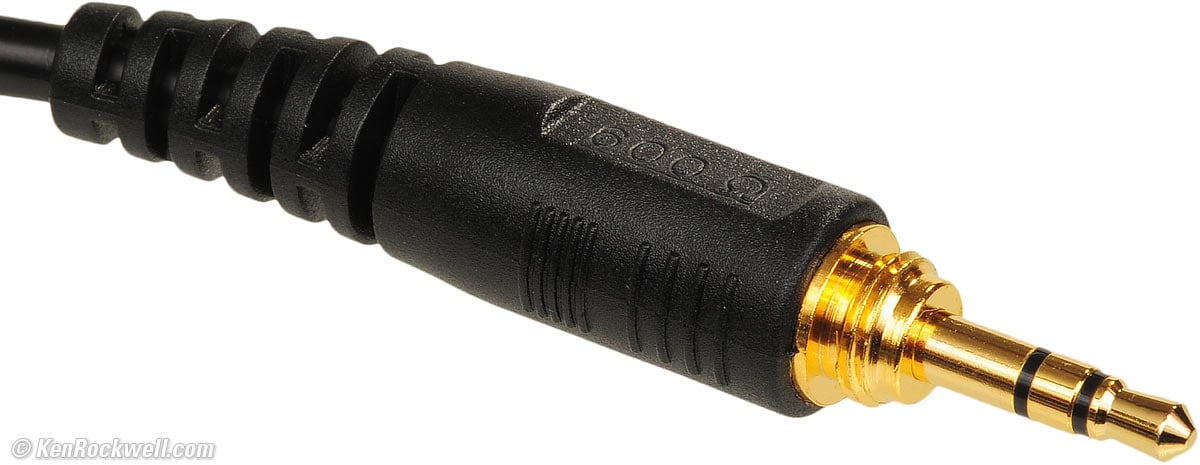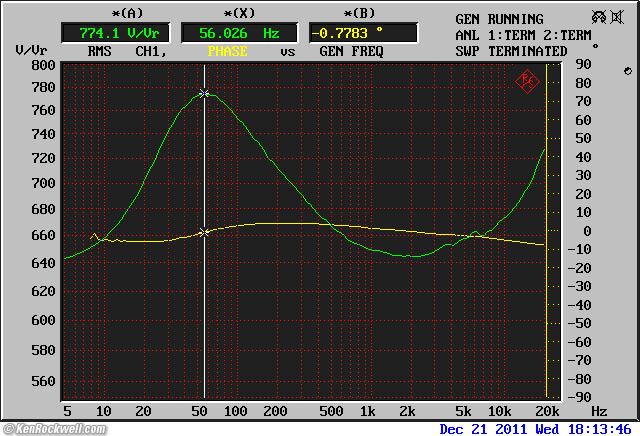Home Donate New Search Gallery Reviews How-To Books Links Workshops About Contact
beyerdynamic DT 770
600 Ω MADE IN GERMANY
© 2012-2020 KenRockwell.com. All rights reserved.
beyerdynamic DT 770 (10.3 oz./290g without cord, about $150). larger. This free website's biggest source of support is when you use these links, especially this link to it at Amazonoto-Video when you get anything, regardless of the country in which you live. Thanks! Ken.
This all-content, junk-free website's biggest source of support is when you use those or any of these links to approved sources when you get anything, regardless of the country in which you live. Thanks for helping me help you! Ken.
March 2020 beyerdynamic Reviews Headphone Reviews Audio Reviews All Reviews
|
|
The beyerdynamic DT 770 has been among the world's most popular closed-back dynamic headphones among professional recording engineers since its introduction in the 1980s. It is especially popular for monitoring live remote recordings, as well as for music lovers who want to hear the sound of the original music hall instead of the noise in their homes.
The DT 770 has been in beyerdynamic's catalog for a long time, so I'm surprised to see this 600 ohm version suddenly listed as "obsolete" as I was writing this review! I will presume beyerdynamic is in the process of changing its cosmetics as it does every few years, and the 250 Ohm version remains current.
I first auditioned the DT 770 in 1988 when I bought my first pair of DT 990, which is the open version of the DT 770. In those days, the closed DT 770 sounded more as you'd expect a closed headphone to sound (more like you've got your hands cupped around your ears), but today's DT 770 is much more open-sounding than the DT 770 of the 1980s.
Today's DT 770 has a dinky 3.5mm plug and includes a screw-in ¼" adapter, and comes in 80 Ω, 250 Ω and 600 Ω versions. I am reviewing the 600 Ω version here.
The DT 770 is a closed headphone, so you hear little of the surrounding noise, and there is very little sound leakage outside the headphones.
These are tough, well-built and good sounding headphones. I prefer the beyerdynamic DT 880 for more natural sound, while if you need a closed headphone, the DT 770 is among the best available.
The DT 770, DT 880 and DT 990 are pretty much the same headphone, with the difference being that the DT 990 and DT 880 are open-back, and that the DT 880 lacks the bass and treble boosts of the DT 770 and DT 990.
This DT 770 has neutral, open sound overall with very solid bass, however its boosted treble will sound peaky and brittle compared to the beyerdynamic DT 880. On the other hand, when used for monitoring recordings, the DT 770 isn't going to let any noise, seat creak or page-turn go unheard.
Impedances
The beyerdynamic DT 770 comes in at least three different versions with different impedances: 80 Ω, 250 Ω, and 600 Ω. I'm testing the 600 Ω version here.
The biggest difference among the various impedances is sensitivity. The 80 Ω version will play super-loud from your iPod, while the 250 Ω and 600 Ω versions will require higher volume settings for the same level — or a dedicated headphone amplifier.
beyerdynamic DT 770 plug. Note molded "600 Ω" marking. bigger.
Even though beyerdynamic doesn't recommend this 600 Ω version for use with iPods, it works great from an iPod, however with pop music you'll usually have your iPod set at close to maximum volume, and with classical music, you'll always have your iPod set to maximum, and might wish you had another 5 to 10 more dB of gain. It sounds great, but you can't make yourself deaf.
(Classical music is recorded at lower average levels because it gets very loud as well as soft, so playback level settings need to be higher for accurate reproduction — and allow much higher peak reproduced sound levels. In an idiotic attempt to make every CD sound as bad and loud as the next, most other music today is severely dynamically compressed and limited to be at 100% loudness all the time, so playback levels must be set much lower, eliminating musical peaks and dynamics and half the music with it.)
Watching movies on an iPad, you'll be at full volume with the 600 Ω version.
I have not tried the 250 Ω and 80 Ω versions. I'm sure they play much louder, but I can't vouch for how well they sound.
Measured Impedance, 600 Ω version
600 Ω beyerdynamic DT 770 measured Impedance magnitude (Ω), and phase angle versus frequency. (R&S UPL; +90º is capacitive, -90º is inductive.)
Amplification
The actual impedance is never less than 640 Ω, and more importantly, it's almost purely resistive. These are trivially easy to drive so long as you have enough voltage from any real headphone amp.
Beware of the many expensive but wimpy headphone amplifiers with no more than 2 V RMS output, which isn't much more than the 1 V RMS output of an iPod. These wimpy amps are the ones often powered by batteries and sold with exotic DACs at high prices for use with iPods, but read the specifications carefully to be sure that they have plenty of output. Ask an electronic engineer if you need help.
A proper headphone amp should be able drive these to about 7 V RMS or 20 dBm or 100 mW into 600 Ω, which is more than deafening.
I auditioned these with various amplifiers, and the sound didn't vary — just the maximum output, which of course will vary the perceived bass response.
Sound
The DT 770 sounds clean and open, however its treble is boosted and brittle, especially compared to the silky-smooth beyerdynamic DT 880. With the DT 770, you're sitting closer to the violins and can hear fingers hitting the keys of the piano.
The DT 770 is fine with clean recordings, but much less pleasant with rough recordings.
There are mild peaks at around 6.1 kHz, 8.75 kHz and 11.1 kHz, at least while sitting on my ears. Sadly these peaks don't add to the clarity of the sound; they just make it brittle. I don't know if break-in will soften these.
The DT 770 sound a little bit less less natural than DT880 or DT990 for choral music, but still usually very pleasant, and still more natural than the Ultrasone Edition 8.
The DT 770 are a little more sensitive than either the DT 880 or DT 990.
The DT 770 sounds far more open than the Ultrasone Edition 8, but the DT 770 is also much brighter.
The DT 770 has very precise imaging, but its soundstage isn't much different than other headphones.
The DT 770 has somewhat boosted bass compared to the DT 880, but unlike the DT 990, the bass isn't at all boomy from the DT 770. The DT 770's bass is tight, deep and clean.
The bass is solid to 27 Hz, and still audible at 16 Hz. Of course below 20 Hz "audible" is more the room noise modulating itself from intermodulation with the headphone's subsonic input, but that's the way it works in live sound, too. Even driven to deafening levels with a real headphone amplifier, I can't get sine waves to buzz, rattle or distort.
Stevie Wonder's insane Moog bass pedals sound awesome through the DT 770, probably the best I've heard through headphones.
You can get even more bass by pressing these more tightly to your head.
The DT 770 has decent isolation, but less isolation than the Ultrasone Edition 8, and it also sounds much more open than the Edition 8.
The DT 770 has some external sound leakage, but much less than any open headphone.
Ergonomics
The beyerdynamic DT 770 are a very well made, no-surprises traditional headphone.
The earpieces tend to keep moving up into the harp by themselves when put away.
The earpads are semi-soft and covered with fuzzy velour. They feel like the Sennheiser HD 800.
The pads ride around your ears, not touching them.
They stick well on my head as I move around.
The padded harp cover seems like plastic fake leather over padding.
The solid plastic covers on ear earpiece look cheesier than the open metal grilles of the DT 880 and DT 990.
They have a long straight cord. I left most of it still coiled up, a trip hazard otherwise.
This DT 770 is much sturdier than Sennheiser HD800. It's not delicate.
The DT 770's pointy 3.5mm plug pops right into a cased iPad 2.
Specifications top
Type
Dynamic stereo headphones
Closed-back, isolating.
Circumaural: sits around the ear on your head.
Cable
2.5 meter (8 feet), straight.
3.5mm plug.
Screw-in ¼" adapter included for use with real equipment.
Frequency Response
5 ~ 35,000 Hz, no conditions specified, making these numbers a meaningless waste of ink.
Impedance
Rated 80 Ω, 250 Ω or 600 Ω.
The 600 Ω version is tested here.
Nominal SPL
96 dB, no conditions specified, making this number a meaningless waste of ink.
Power Handling
100 mW, no conditions specified.
Case
Free included case (same as DT 880, shown). enlarge.
Well-padded case included, claimed to be leather.
Weight
10.300 oz. (282.2g), measured without cord.
12.385 oz. (351.2g) measured with cord, but no adapter.
10.2 oz. (290g), rated.
Included
DT 770 headphones.
Gold screw-in ¼" adapter.
Zippered case with foam insert. Claimed to be leather.
No instructions and no warnings, thank goodness. It just comes with a flyer talking about beyerdynamic's history.
Price
$150, March 2020.
$250, March 2012
Help me help you top
I support my growing family through this website, as crazy as it might seem.
If you've found my research helpful, this free website's biggest source of support is when you use these links, especially this link to it at B&H Photo-Video when you get anything, regardless of the country in which you live. Thanks! Ken.
If you find this page as helpful as a book you might have had to buy or a workshop you may have had to take, feel free to help me continue helping everyone.
If you've gotten your gear through one of my links or helped otherwise, you're family. It's great people like you who allow me to keep adding to this site full-time. Thanks!
If you haven't helped yet, please do, and consider helping me with a gift of $5.00.
As this page is copyrighted and formally registered, it is unlawful to make copies, especially in the form of printouts for personal use. If you wish to make a printout for personal use, you are granted one-time permission only if you PayPal me $5.00 per printout or part thereof. Thank you!
Thanks for reading!
Mr. & Mrs. Ken Rockwell, Ryan and Katie.
Home Donate New Search Gallery Reviews How-To Books Links Workshops About Contact








